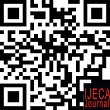Augmented Reality and Learning Motivation in Achieving 21st Century Skills: The Mediating Role of Immersive Learning Experiences
Abstract
Keywords
Full Text:
DOWNLOAD [PDF]References
Adeoye, M. A., & Jimoh, H. A. (2023). Problem-Solving Skills Among 21st-Century Learners Toward Creativity and Innovation Ideas. Thinking Skills and Creativity Journal, 6(1), 52–58. https://doi.org/10.23887/tscj.v6i1.62708
Ahdhianto, E., Barus, Y. K., & Thohir, M. A. (2025). Augmented reality as a game changer in experiential learning: Exploring its role cultural education for elementary schools. Journal of Pedagogical Research, 9(1), 296–313. https://doi.org/10.33902/JPR.202533573
Akçayır, M., & Akçayır, G. (2017). Advantages and challenges associated with augmented reality for education: A systematic review of the literature. Educational Research Review, 20(1), 1–11. https://doi.org/10.1016/j.edurev.2016.11.002
Akinradewo, O., Hafez, M., Aliu, J., Oke, A., Aigbavboa, C., & Adekunle, S. (2025). Barriers to the Adoption of Augmented Reality Technologies for Education and Training in the Built Environment: A Developing Country Context. Technologies, 13(2), 1–15. https://doi.org/10.3390/technologies13020062
Alivernini, F., Manganelli, S., Lucidi, F., & Cavicchiolo, E. (2023). Understanding and supporting the motivation of students from low-income families. Contemporary Educational Psychology, 73(March), 102177. https://doi.org/10.1016/j.cedpsych.2023.102177
Amores-Valencia, A., Burgos, D., & Branch-Bedoya, J. W. (2022). Influence of motivation and academic performance in the use of Augmented Reality in education. A systematic review. Frontiers in Psychology, 13, p 1. https://doi.org/10.3389/fpsyg.2022.1011409
Amores-Valencia, A., Burgos, D., & Branch-Bedoya, J. W. (2023). The Influence of Augmented Reality (AR) on the Motivation of High School Students. Electronics (Switzerland), 12(22), 4715. https://doi.org/10.3390/electronics12224715
Anil, Ö., & Batdi, V. (2023). Use of augmented reality in science education: A mixed-methods research with the multi-complementary approach. In Education and Information Technologies (Vol. 28, Issue 5). Springer US. https://doi.org/10.1007/s10639-022-11398-6
Anwar, M., Budayawan, K., Faiza, D., & Kamarudin, N. D. (2025). Fostering Critical Thinking Skills through Augmented Reality : Insights from Higher Education Engineering Students. International Journal of Information and Education Technology, 15(6), 1122–1133. https://doi.org/10.18178/ijiet.2025.15.6.2315
Anwar, M. S., Yang, J., Frnda, J., Choi, A., Baghaei, N., & Ali, M. (2025). Metaverse and XR for cultural heritage education: applications, standards, architecture, and technological insights for enhanced immersive experience. Virtual Reality, 29(2), 29–51. https://doi.org/10.1007/s10055-025-01126-z
Arifitama, B., & Rahman, T. K. A. (2024). Influence of Technology Readiness and Flow Theory toward the Acceptance of Augmented Reality among Students in Private University in Jakarta, Indonesia. International Journal of Information and Education Technology, 14(10), 1344–1355. https://doi.org/10.18178/ijiet.2024.14.10.2165
Bacca, J., Baldiris, S., Fabregat, R., Kinshuk, & Graf, S. (2015). Mobile Augmented Reality in Vocational Education and Training. Procedia Computer Science, 75(Vare), 49–58. https://doi.org/10.1016/j.procs.2015.12.203
Belda-Medina, J. (2022). Using Augmented Reality (Ar) As an Authoring Tool in Efl Through Mobile Computer-Supported Collaborative Learning. Teaching English with Technology, 22(2), 115–135. https://www.tewtjournal.org
Buchner, J., & Zumbach, J. (2018). Promoting intrinsic motivation with a mobile augmented reality learning environment. Proceedings of the 14th International Conference on Mobile Learning 2018, ML 2018, 1(1997), 55–61. https://eric.ed.gov/?id=ED590357
Buditjahjanto, I. G. P. A., & Irfansyah, J. (2023). Augmented Reality on Students’ Academic Achievement Viewed From the Creative Thinking Level. Journal of Technology and Science Education, 13(3), 597–612. https://doi.org/10.3926/jotse.1813
Bureau, J. S., Howard, J. L., Chong, J. X. Y., & Guay, F. (2022). Pathways to Student Motivation: A Meta-Analysis of Antecedents of Autonomous and Controlled Motivations. Review of Educational Research, 92(1), 46–72. https://doi.org/10.3102/00346543211042426
Chen, P., Yang, D., Lavonen, J., Metwally, A. H. S., & Tang, X. (2024). How do students of different self-efficacy regulate learning in collaborative design activities? An epistemic network analysis approach. Frontiers in Psychology, 15(15), 1–16. https://doi.org/10.3389/fpsyg.2024.1398729
Crogman, H. T., Cano, V. D., Pacheco, E., Sonawane, R. B., & Boroon, R. (2025). Virtual Reality, Augmented Reality, and Mixed Reality in Experiential Learning: Transforming Educational Paradigms. Education Sciences, 15(3), 1–23. https://doi.org/10.3390/educsci15030303
Czerkawski, B., & Berti, M. (2021). Learning experience design for augmented reality. Research in Learning Technology, 29(29: 2429), 1–12. https://doi.org/10.25304/rlt.v29.2429
Czok, V., Krug, M., Müller, S., Huwer, J., & Weitzel, H. (2023). Learning Effects of Augmented Reality and Game-Based Learning for Science Teaching in Higher Education in the Context of Education for Sustainable Development. Sustainability (Switzerland), 15(21). https://doi.org/10.3390/su152115313
David, L., & Weinstein, N. (2024). The how and how much of technology use in the classroom: A motivational approach to teachers’ technology use. European Journal of Education, 59(4), 1–15. https://doi.org/10.1111/ejed.12674
Experiential, T., & Cycle, L. (2012). The Experiential Learning Cycle. Encyclopedia of the Sciences of Learning, 5(1), 3310–3310. https://doi.org/10.1007/978-1-4419-1428-6_6021
Gandolfi, E., & Ferdig, R. E. (2025). Exploring the relationship between motivation and augmented reality presence using the augmented reality presence scale (ARPS). Educational Technology Research and Development, 73(2), 793–814. https://doi.org/10.1007/s11423-025-10446-5
Hair, J. F., Ringle, C. M., Gudergan, S. P., Fischer, A., Nitzl, C., & Menictas, C. (2019). Partial least squares structural equation modeling-based discrete choice modeling: an illustration in modeling retailer choice. Business Research, 12(1), 115–142. https://doi.org/10.1007/s40685-018-0072-4
Han, J. Y., & Fung, F. M. (2024). Spatial reality in education - Approaches from innovation experiences in Singapore. Chemistry Teacher International, 7(2), 287–302. https://doi.org/10.1515/cti-2024-0088
Herlinawati, H., Marwa, M., Ismail, N., Junaidi, Liza, L. O., & Situmorang, D. D. B. (2024). The integration of 21st century skills in the curriculum of education. Heliyon, 10(15), e35148. https://doi.org/10.1016/j.heliyon.2024.e35148
Indarta, Y., Ambiyar, Fadhillah, Dwinggo Samala, A., Rahman Riyanda, A., Ranuharja, F., Ayasrah, F. T., & Torres-Toukoumidis, A. (2025). Transforming Vocational Education through Augmented Reality: A Systematic Review of Current Trends, Challenges, and Future Opportunities. Data and Metadata, 4(1), 578. https://doi.org/10.56294/dm2025578
Jantanukul, W. (2024). Immersive Reality in Education : Transforming Teaching and Learning through AR , VR , and Mixed Reality Technologies. Journal of Education and Learning Reviews, 1(April), 51–62. https://doi.org/10.60027/jelr.2024.750
Jensen, L., & Konradsen, F. (2018). A review of the use of virtual reality head-mounted displays in education and training. Education and Information Technologies, 23(4), 1515–1529. https://doi.org/10.1007/s10639-017-9676-0
Kelechi, E., & Nnaji, C. O. (2024). The Role of Augmented Reality ( AR ) in Interactive Learning for Children. Proceeding International Conference Of Innovation Science, Technology, Education, Children And Health, 4(1), 180–185. https://doi.org/10.62951/icistech.v4i1.139
Kock, N. (2015). Common method bias in PLS-SEM: A full collinearity assessment approach. International Journal of E-Collaboration, 11(4), 1–10. https://doi.org/10.4018/ijec.2015100101
Kolb, D. A. (1984). Experiential Learning: Experience as The Source of Learning and Development. Prentice Hall, Inc., 1(1984), 20–38. https://doi.org/10.1016/B978-0-7506-7223-8.50017-4
Koumpouros, Y. (2024). Revealing the true potential and prospects of augmented reality in education. Smart Learning Environments, 11(1). https://doi.org/10.1186/s40561-023-00288-0
Krüger, J. M., Palzer, K., & Bodemer, D. (2022). Learning with augmented reality: Impact of dimensionality and spatial abilities. Computers and Education Open, 3(December 2021), 100065. https://doi.org/10.1016/j.caeo.2021.100065
Lampropoulos, G., & Kinshuk. (2024). Virtual reality and gamification in education: a systematic review. In Educational Technology Research and Development (Vol. 72, Issue 3). Springer US. https://doi.org/10.1007/s11423-024-10351-3
Liamruk, P., Onwong, N., Amornrat, K., Arayapipatkul, A., & Sipiyaruk, K. (2025). Development and evaluation of an augmented reality serious game to enhance 21st century skills in cultural tourism. Scientific Reports, 15(1), 1–10. https://doi.org/10.1038/s41598-025-95615-5
Lima, C. B. De, Walton, S., & Owen, T. (2022). A critical outlook at augmented reality and its adoption in education. Computers and Education Open, 3(April), 100103. https://doi.org/10.1016/j.caeo.2022.100103
Lin, X. P., Li, B. Bin, Yao, Z. N., Yang, Z., & Zhang, M. (2024). The impact of virtual reality on student engagement in the classroom–a critical review of the literature. Frontiers in Psychology, 15(April), 1–8. https://doi.org/10.3389/fpsyg.2024.1360574
Liu, Y., Zhan, Q., & Zhao, W. (2023). A systematic review of VR/AR applications in vocational education: models, affects, and performances. Interactive Learning Environments, 1–18. https://doi.org/10.1080/10494820.2023.2263043
Lu, S. J., Liu, Y. C., Chen, P. J., & Hsieh, M. R. (2020). Evaluation of AR embedded physical puzzle game on students’ learning achievement and motivation on elementary natural science. Interactive Learning Environments, 28(4), 451–463. https://doi.org/10.1080/10494820.2018.1541908
M. Ryan and L. Deci. (2000). Self-determination theory. American Psychologist, 55(1), 68–78. https://doi.org/10.4324/9780429052675-23
Makransky, G., & Lilleholt, L. (2018). A structural equation modeling investigation of the emotional value of immersive virtual reality in education. Educational Technology Research and Development, 66(5), 1141–1164. https://doi.org/10.1007/s11423-018-9581-2
Makransky, G., & Petersen, G. B. (2021). The Cognitive Affective Model of Immersive Learning (CAMIL): a Theoretical Research-Based Model of Learning in Immersive Virtual Reality. Educational Psychology Review, 33(3), 937–958. https://doi.org/10.1007/s10648-020-09586-2
Memon, M. A., Thurasamy, R., Cheah, J. H., Ting, H., Chuah, F., & Cham, T. H. (2023). Addressing Common Method Bias, Operationalization, Sampling, and Data Collection Issues in Quantitative Research: Review and Recommendations. Journal of Applied Structural Equation Modeling, 7(2), i–xiv. https://doi.org/10.47263/JASEM.7(2)01
Mike, S. (2019). Immersive learning. Practical Pedagogy, 182–185. https://doi.org/10.4324/9780429485534-31
Ojo, A. O., Ravichander, S., Tan, C. N. L., Anthonysamy, L., & Arasanmi, C. N. (2024). Investigating student’s motivation and online learning engagement through the lens of self-determination theory. Journal of Applied Research in Higher Education, 5(January), 16. https://doi.org/10.1108/JARHE-09-2023-0445
Oliveira dos Santos, W., Bittencourt, I. I., Isotani, S., Dermeval, D., Brandão Marques, L., & Frango Silveira, I. (2018). Flow Theory to Promote Learning in Educational Systems: Is it Really Relevant? Revista Brasileira de Informática Na Educação, 26(02), 29. https://doi.org/10.5753/rbie.2018.26.02.29
Pamungkas, S. F., Widiastuti, I., & Suharno. (2020). 21st century learning: Experiential learning to enhance critical thinking in vocational education. Universal Journal of Educational Research, 8(4), 1345–1355. https://doi.org/10.13189/ujer.2020.080427
Papanastasiou, G., Drigas, A., Skianis, C., Lytras, M., & Papanastasiou, E. (2019). Virtual and augmented reality effects on K-12, higher and tertiary education students’ twenty-first century skills. Virtual Reality, 23(4), 425–436. https://doi.org/10.1007/s10055-018-0363-2
Partnership for 21 st Century Skills. (2015). Partnership for 21St Century Skills-Core Content Integration. Ohio Department of Education, 1. www.P21.org.
Pasalidou, C., Lytridis, C., Tsinakos, A., & Fachantidis, N. (2025). Augmented Reality and Robotics in Education: A Literature Review. Computers in Human Behavior: Artificial Humans, 4(February), 100157. https://doi.org/10.1016/j.chbah.2025.100157
Prasetya, F., Fortuna, A., Samala, A. D., Rawas, S., Mystakidis, S., Syahril, Waskito, Primawati, Wulansari, R. E., & Kassymova, G. K. (2024). The impact of augmented reality learning experiences based on the motivational design model: A meta-analysis. Social Sciences and Humanities Open, 10(May), 100926. https://doi.org/10.1016/j.ssaho.2024.100926
Radianti, J., Majchrzak, T. A., Fromm, J., & Wohlgenannt, I. (2020). A systematic review of immersive virtual reality applications for higher education: Design elements, lessons learned, and research agenda. Computers and Education, 147(19), 103778. https://doi.org/10.1016/j.compedu.2019.103778
Ramadan, M., Baba, K., Hammad, S., & Ali, M. (2024). The Impact of Augmented Reality-Based Learning Media on Students ’ Digital Literacy Skills : A Study on Junior High School Students. Journal of Educational Technology and Learning Creativity, 2(1), 63–70. https://doi.org/10.37251/jetlc.v2i1.1415
Reis, V. (2025). Immersive tools in engineering education—A systematic review. Applied Sciences, 15(11), 6339. https://doi.org/10.3390/app15116339
Rizki, I. A., Mirsa, F. R., Islamiyah, A. N., Saputri, A. D., Ramadani, R., & Habibbulloh, M. (2025). Ethnoscience-enhanced physics virtual simulation and augmented reality with inquiry learning: Impact on students’ creativity and motivation. Thinking Skills and Creativity, 57(September 2024), 101846. https://doi.org/10.1016/j.tsc.2025.101846
Schaper, M. M., & Pares, N. (2022). Enhancing Students’ Social and Emotional Learning in Educational Virtual Heritage through Projective Augmented Reality. Conference on Human Factors in Computing Systems - Proceedings, November. https://doi.org/10.1145/3491101.3503551
Silva, C. S., Magano, J., Matos, A., & Nogueira, T. (2021). Sustainable quality management systems in the current paradigm: The role of leadership. Sustainability (Switzerland), 13(4), 1–21. https://doi.org/10.3390/su13042056
Stavropoulou, G., Daniilidou, A., & Nerantzaki, K. (2025). Exploring the Interplay of Motivation , Self-Efficacy , Critical Thinking , and Self-Regulation in Predicting Academic. F1000Research, 14(May), 1–22. https://doi.org/10.12688/f1000research.161821.1
Suhail, N., Bahroun, Z., & Ahmed, V. (2024). Augmented reality in engineering education: enhancing learning and application. Frontiers in Virtual Reality, 5(October), 1–22. https://doi.org/10.3389/frvir.2024.1461145
Sweller, J. (1988). Cognitive load during problem solving: Effects on learning. Cognitive Science, 12(2), 257–285. https://doi.org/10.1016/0364-0213(88)90023-7
Trongtorsak, S., Saraubon, K., & Nilsook, P. (2021). Collaborative Experiential Learning Process for Enhancing Digital Entrepreneurship. Higher Education Studies, 11(1), 137. https://doi.org/10.5539/hes.v11n1p137
Uzoma, A. J., & Emetarom, U. G. (2020). Equipping Higher Education Students With the 21 St Century Skills Beyond Computer and Technological Skills for Future Effective Participation in the Global Economy. European Journal of Education Studies, 7(5), 434–448. https://doi.org/10.5281/zenodo.2588851
Wang, Q. (2025). Cultivating Authenticity : A Framework for Instructional Design in Augmented Reality ( AR ) Storytelling. Journal of Applied Instructional Design, 20(24), 269–288. https://doi.org/10.59668/2033.18645
Wang, Y., Wang, H., Wang, S., Wind, S. A., & Gill, C. (2024). A systematic review and meta-analysis of self-determination-theory-based interventions in the education context. Learning and Motivation, 87(June), 102015. https://doi.org/10.1016/j.lmot.2024.102015
Yang, H., Cai, M., Diao, Y., Liu, R., Liu, L., & Xiang, Q. (2023). How does interactive virtual reality enhance learning outcomes via emotional experiences? A structural equation modeling approach. Frontiers in Psychology, 13(January), 1–16. https://doi.org/10.3389/fpsyg.2022.1081372
Zambri, A. A., Khalid, F., & Kamaruzaman, M. F. (2022). Integration of Augmented Reality (AR) Technology in Education: Perceptions and advantages. Environment-Behaviour Proceedings Journal, 7(SI7), 375–380. https://doi.org/10.21834/ebpj.v7isi7.3804
Zhang, J., Li, G., Huang, Q., Feng, Q., & Luo, H. (2025). Augmented Reality in K–12 Education: A Systematic Review and Meta-Analysis of the Literature from 2000 to 2020. Education Sciences, 14(15), 678. https://doi.org/10.3390/su14159725
Zuo Ruijia, Li Wenling, Z. X. (2025). Augmented Reality and Student Motivation : A Systematic Review. Journal of Computer for Science and Mathematics Learning, 2(1), 38–52. https://doi.org/10.70232/jcsml.v2i1.23
DOI: https://doi.org/10.31764/ijeca.v8i2.32767
Refbacks
- There are currently no refbacks.
Copyright (c) 2025 Budi Riyanto, Riki Wanda Putra, Arya Widiatmaja, Hasri Devin, Cris Kuntadi, I Kadek Laju, Bambang Hermanto

This work is licensed under a Creative Commons Attribution-ShareAlike 4.0 International License.
IJECA (International Journal of Education and Curriculum Application) already indexed:










___________________________________________________________________
| |
____________________________________________________________________
IJECA Publisher Office:







.jpg)




